Eyewitness: Inside a Tour de France team briefing with Israel Premier-Tech
Cyclingnews got a look behind the curtain at the start of stage 4
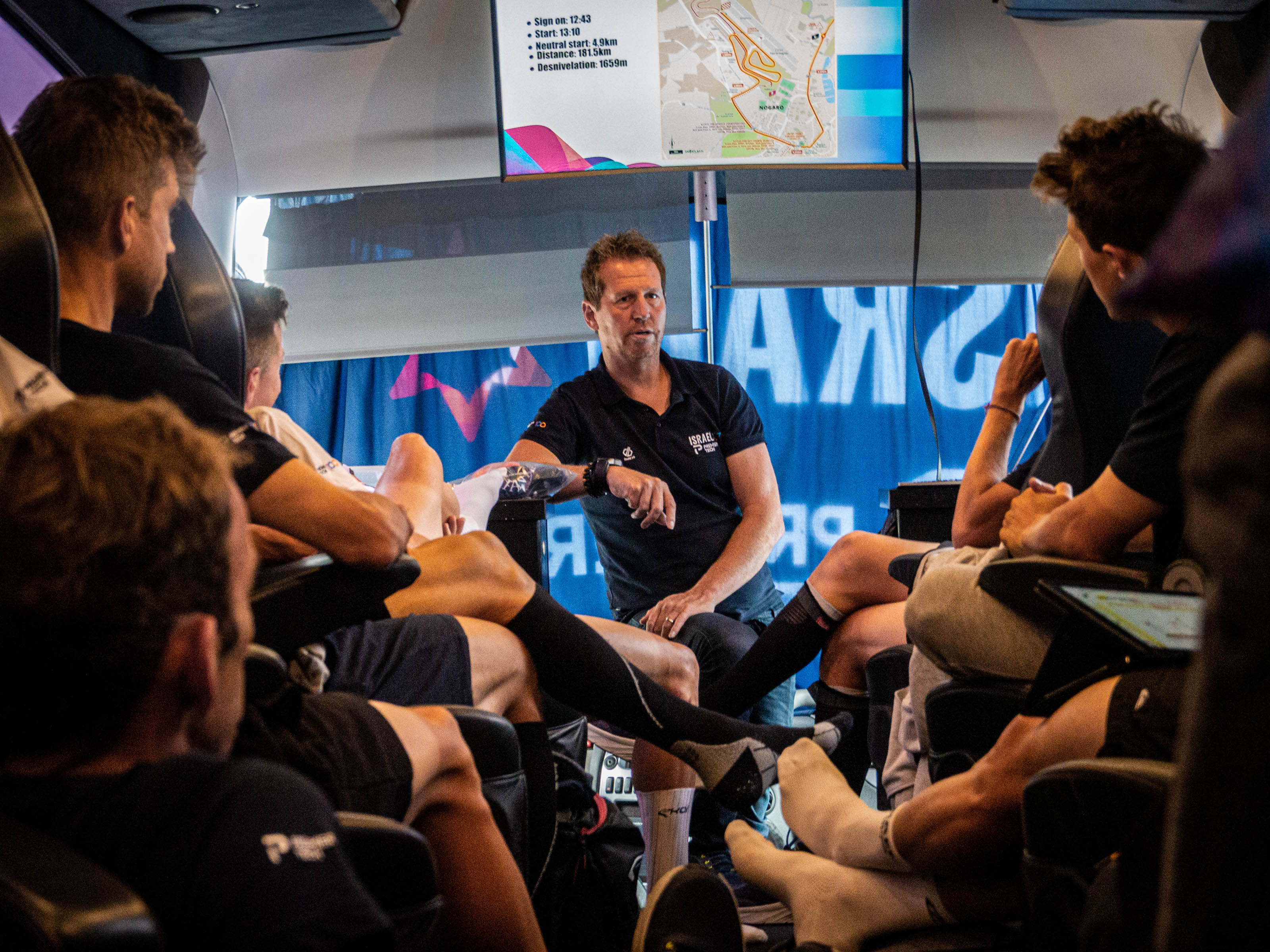
Journalists, or 'new media' as described by the ASO, at the Tour de France, are graced with better access to the inner workings of the Tour de France peloton than many outlets.
Whether it's a request to borrow Simon Clarke's new Factor for photography at a team hotel, behind-the-rope access at the bus to photograph details for a tech gallery, or chatting with a rider, manager, or doctor to talk about ice baths, it's usually fairly straightforward. There are a few COVID precautions that must be adhered to, but access is good.
Cyclingnews is lucky to access a perk that allows us to bring you behind-the-scenes content thanks to the time the team spends 'on the ground' at races.
However, there has been one area that has remained out of bounds even to us: The team bus. That all changed on Tuesday.
My considerably more-experienced colleague, our Head of News, Stephen Farrand, who has covered the Tour de France for nearly three decades, tells me that a decade ago, media would be invited onto the bus to watch the stage while riders weren't there. But nowadays he says "They're sacred. The closest you'll get is an interview on the steps."
Even further from our grasp is the pre-race team briefing, but at the start of Stage 4, an offer came in.
"If you’re around now and are interested in sitting in on the team meeting, I think it should be OK" came the message from Israel Premier-Tech.
Get The Leadout Newsletter
The latest race content, interviews, features, reviews and expert buying guides, direct to your inbox!
Of course I'm interested! After a quick introduction and fist bump with sports director Rik Verbrugghe, I'm ushered onto the bus in what is certainly one of the more surreal moments at this year's Tour.
Verbrugghe moves to the front, other staff stay standing at the rear, and riders sit comfortably in their swivelling, reclining leather chairs at either side of the central aisle. I perch at the top of the steps, over the right shoulder of Hugo Houle.
Before Verbrugghe gets into the upcoming presentation, he opens up the floor to discussion. It's anything but formal, just a bunch of guys talking broadly about whether they feel up for it and fancy their chances. Corbin Strong is their best chance for success on the sprint finish on the motor racing circuit in Nogaro, so much of the discussion centres around him.
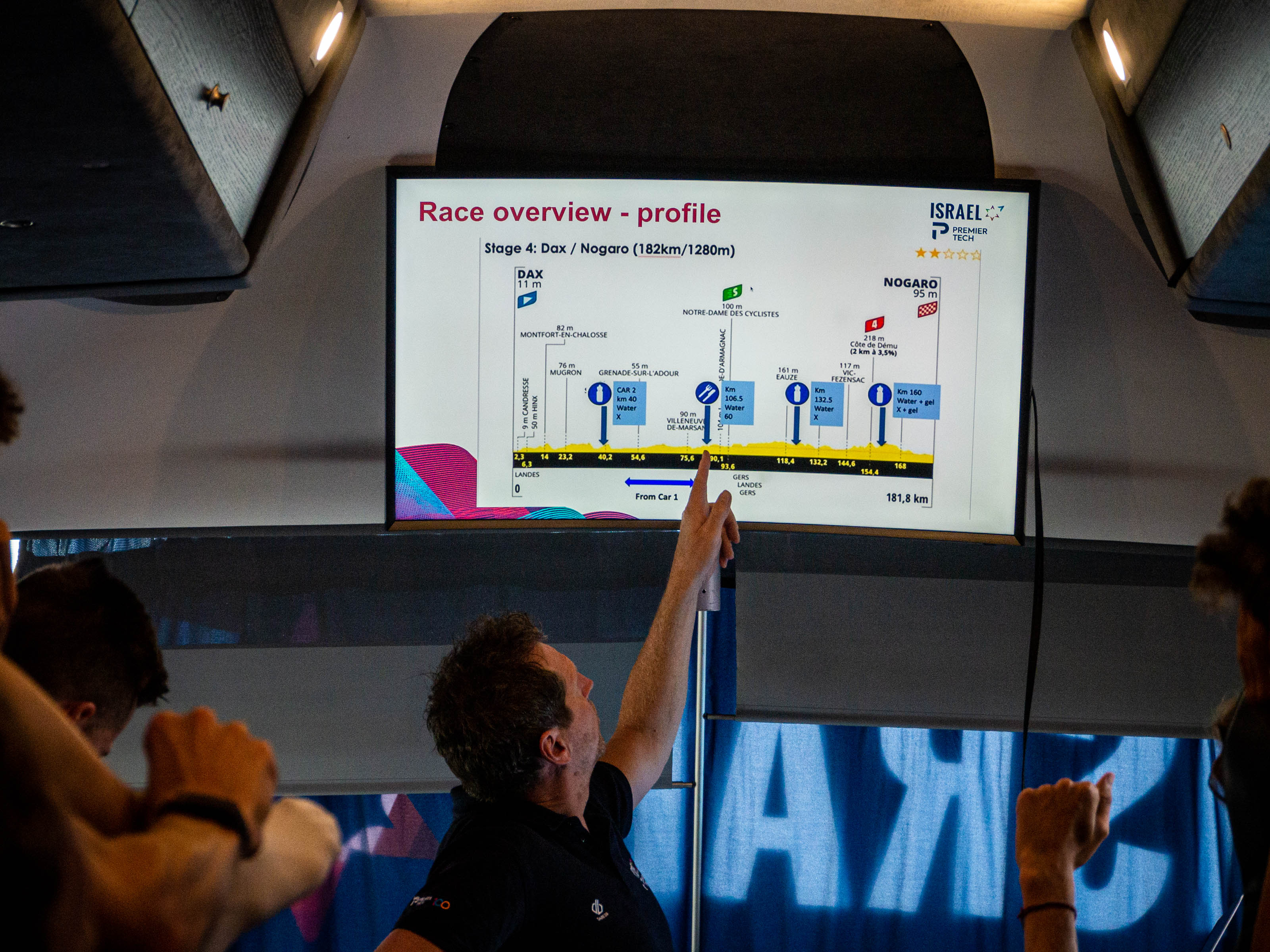
Shortly after, Verbrugghe begins. The television screen at the front of the bus becomes the focal point of riders' attention, on it a presentation of the day's key points. There's no motivational or rousing speech to gee up the riders for the day ahead, it's all facts and figures, interluded by the occasional outburst of discussion.
Verbrugghe begins with the stage profile and feeding plan. Three feed zones await the riders, all of which are in the latter half of the race, so they are told that until this point, anything required must be taken from the car.
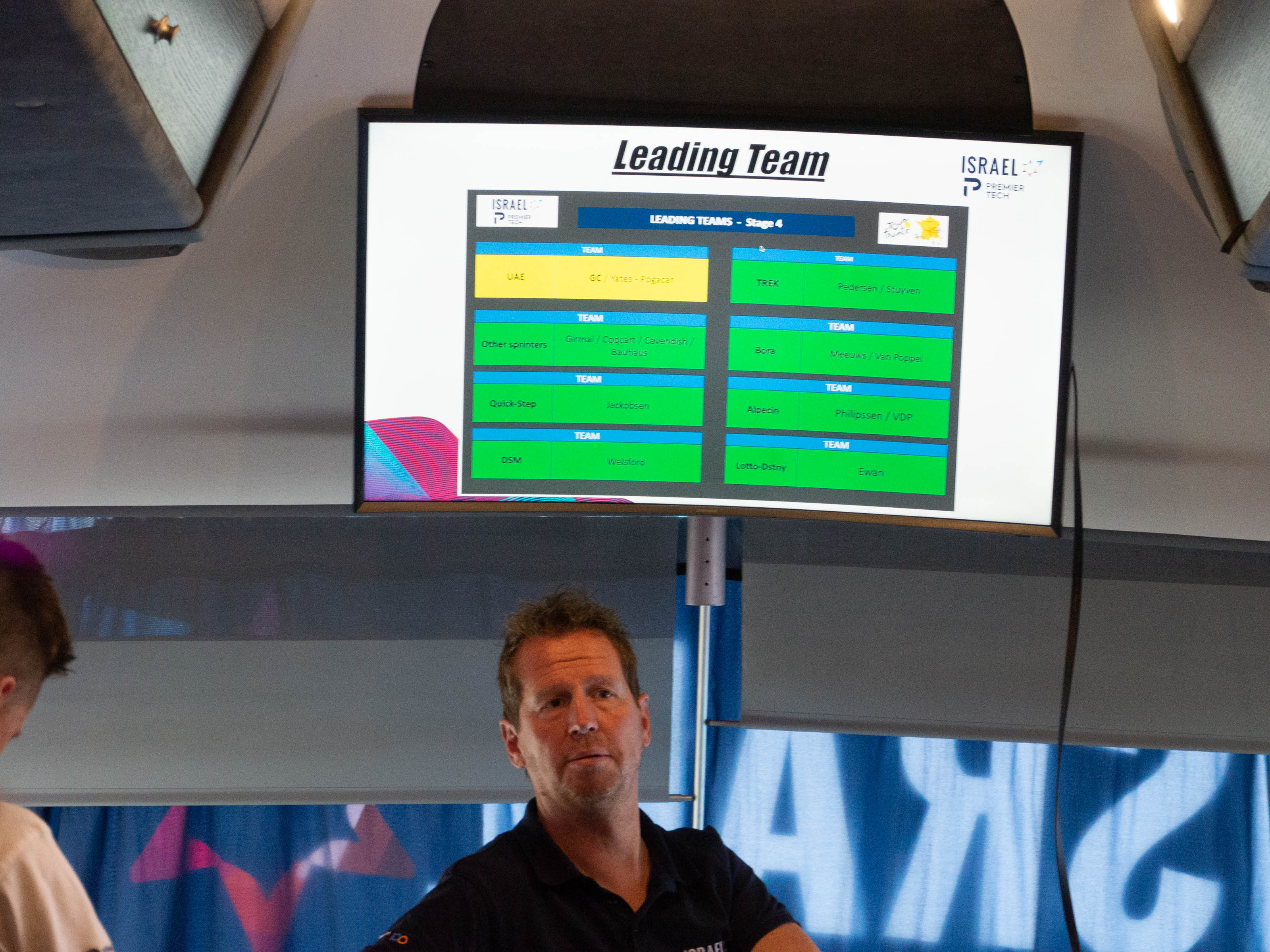
The next slide of the presentation, entitled 'Leading Team,' focuses on the competition. Adam Yates and Tadej Pogačar are called out as overall contenders, but the other seven blocks are reserved for sprinters.
Fabio Jakobsen (Soudal-QuickStep), Sam Welsford (DSM Firmenich) and Caleb Ewan (Lotto DSTNY) are all highlighted, as are the leadout duos of Jasper Stuyven with Mads Pedersen (Lidl-Trek), Danny van Poppel with Jordi Meeus (Bora-Hansgrohe) and Mathieu Van der Poel with Jasper Philipsen (Alpecin Deceuninck). Mark Cavendish (Astana Qazaqstan) is considered among the 'other sprinters', alongside Phil Bauhaus, Biniam Girmay and Bryan Coquard.
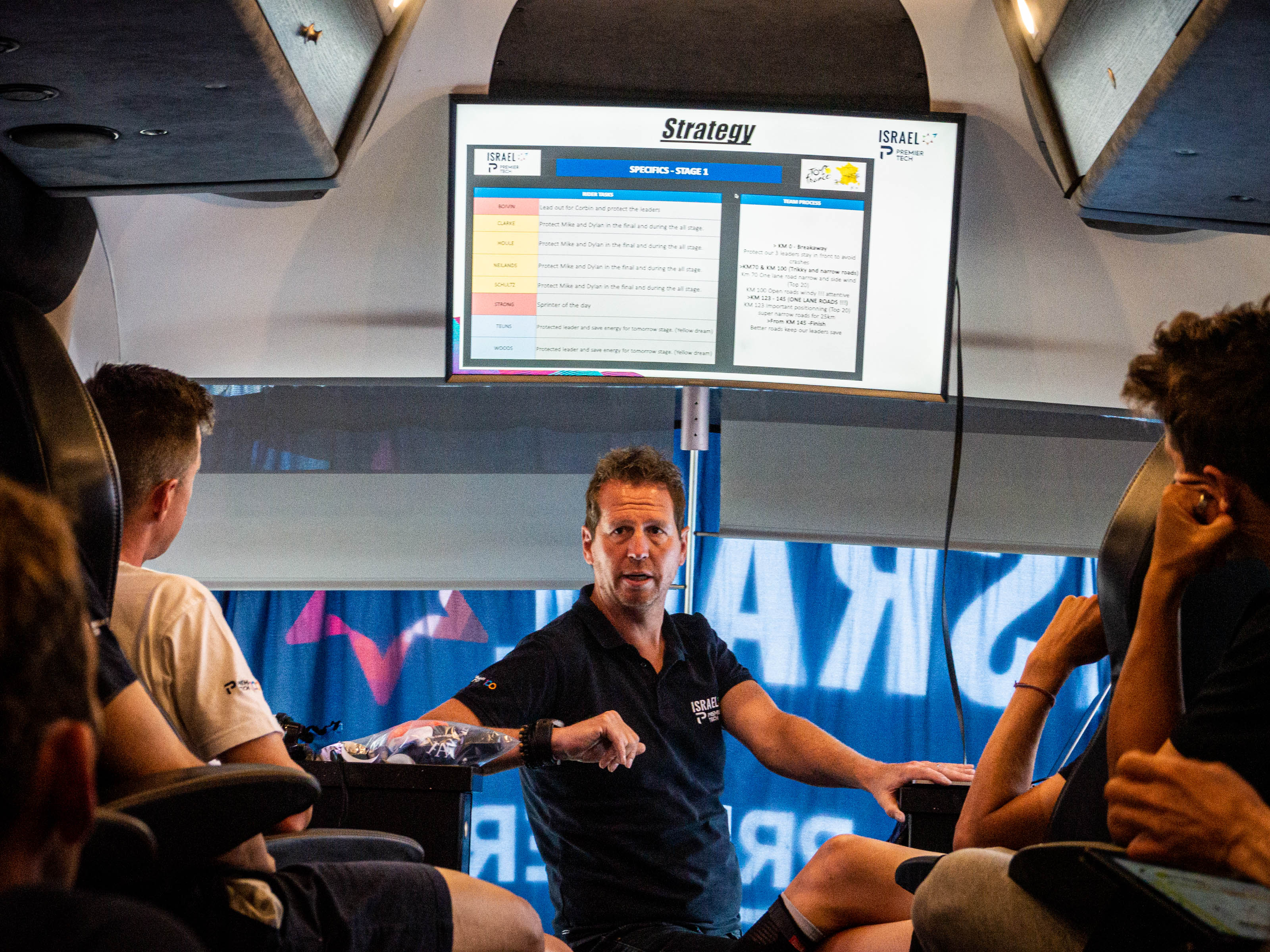
Next up, the important stuff: The strategy for the day. Each rider has a role, and for Simon Clarke, Hugo Houle, Krists Neilands and Nick Schultz, that role is to "protect Mike [Woods] and Dylan [Teuns]. They are the protected riders, who must save energy for tomorrow and the "yellow dream." Strong is the sprinter of the day, while it's up to Boivin to lead him out.
Narrow roads and potentially windy areas were also highlighted, accompanied by reminders of where along the route they will come, and basic instructions like "protect leaders" or "stay top 20."
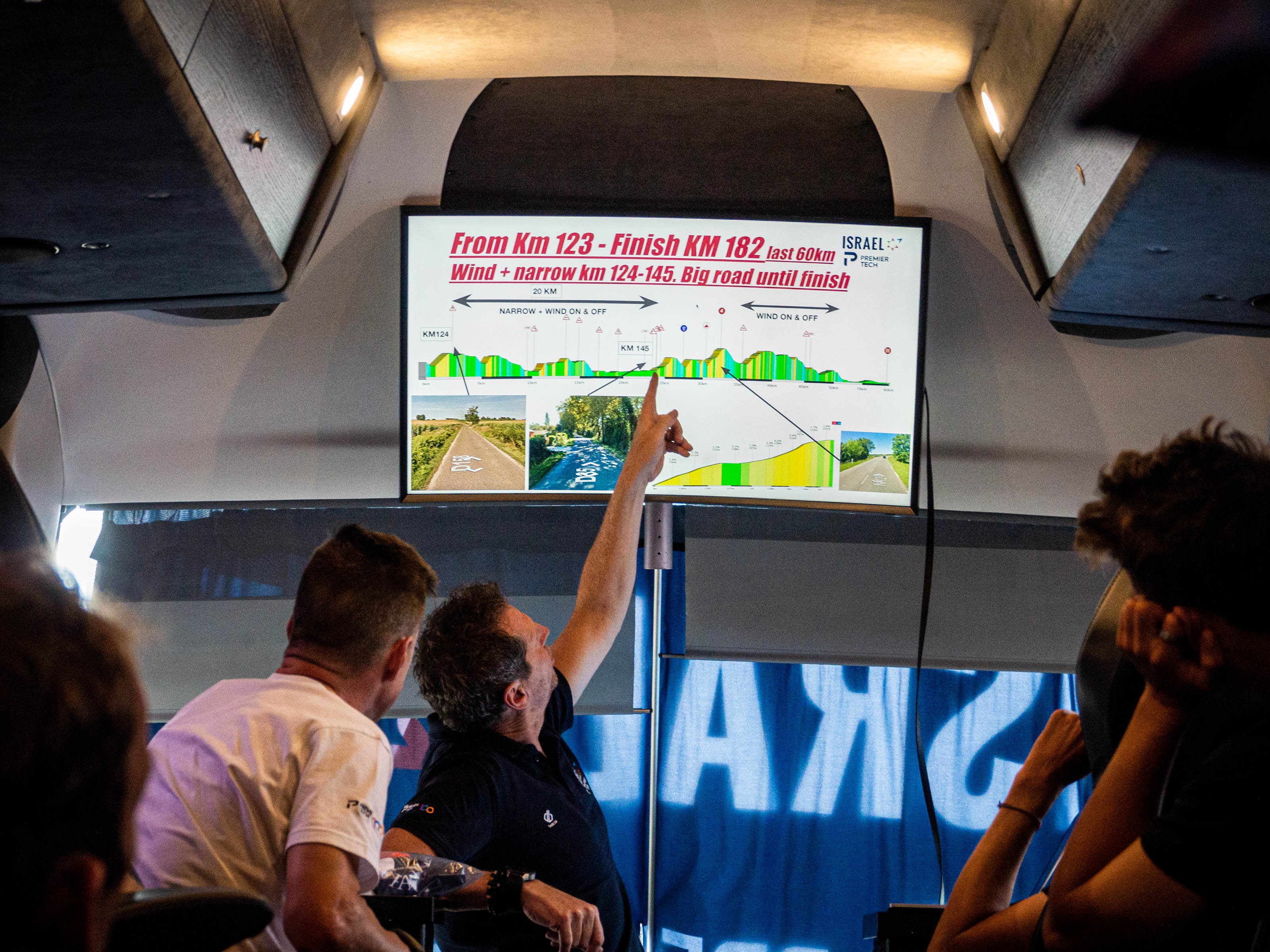
The next few slides expanded on each of these points, with images pulled from Google Street View, as well as a brief mention of the day's only categorised climb.
From here, Verbrugghe moved onto the final 5km. In hindsight, this is the only bit that really mattered. The stage was ridden at a sedate average pace of 37km/h. Tom Pidcock's heart rate averaged all of 99 beats per minute, and there was very little in the way of action until the fight for position at the end.

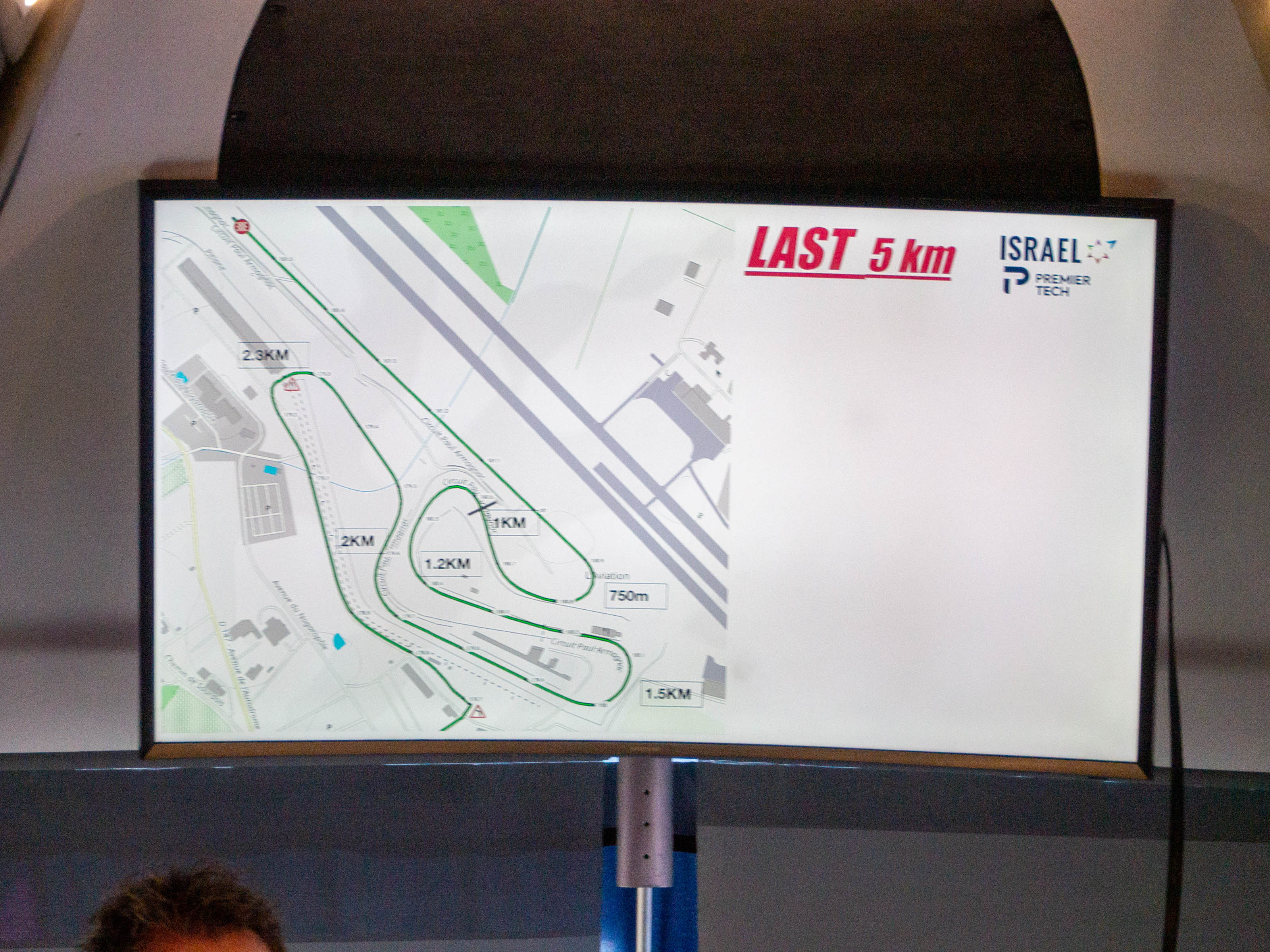
After Verbrugghe had talked riders through each of the corners on the Nogaro motor racing circuit, Corbin Strong highlighted that even though it was a wide motor racing circuit, he still believed that there would be some braking required on the corners.
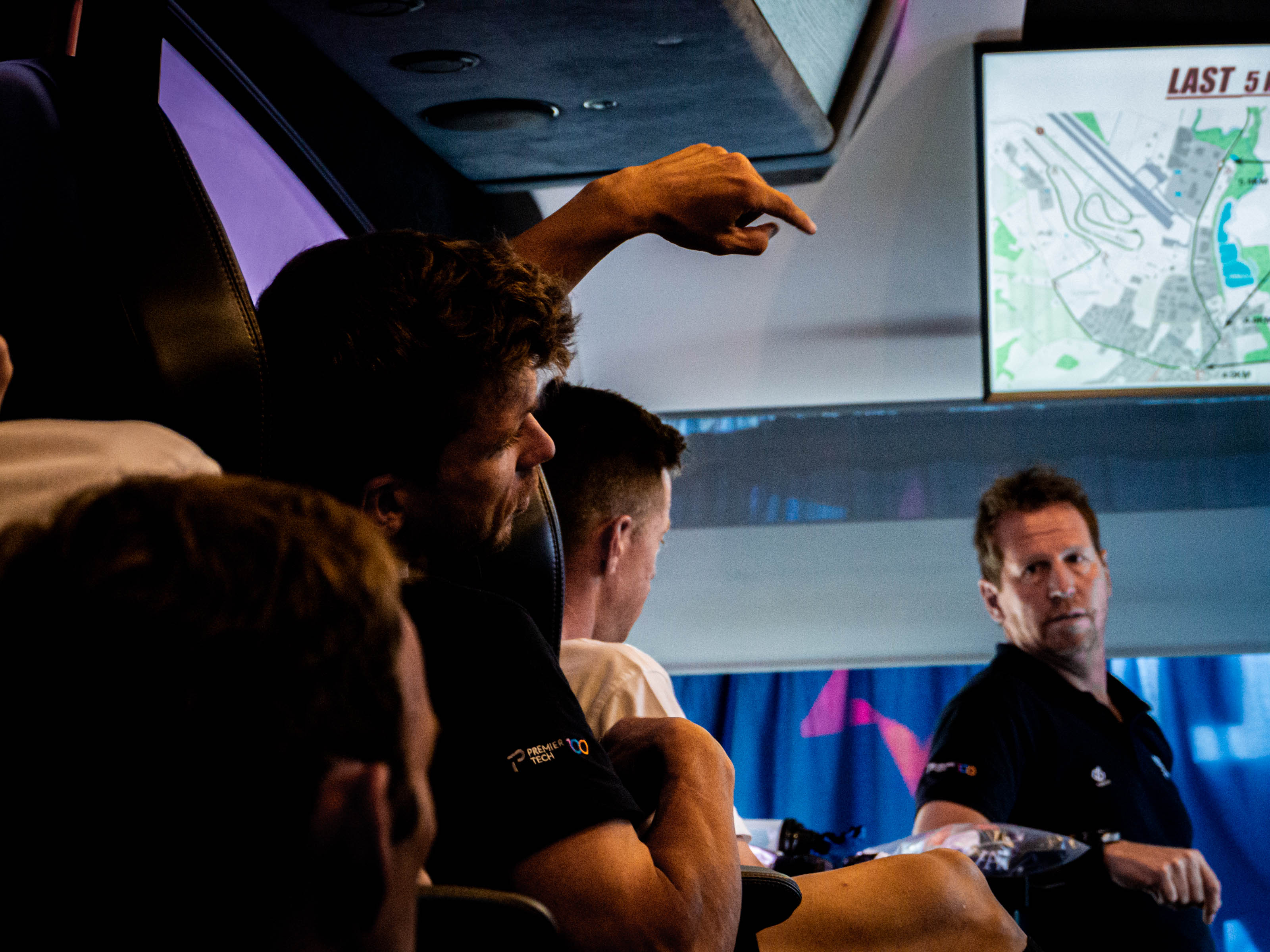
At the end, a patient Houle, who has had his hand up for 30 seconds, sparks an interesting debate about increasing communication in the final. The Tour debutant Strong responded, saying that he is worried that shouting into the radio will add stress to the already stressful situation, but the experienced Boivin interjects, explaining that if someone's shouting on the radio when he's relaxed with 20km to go, then it will add stress, but in the final, he's focussed and already stressed, so more talking will only help.
As the conversation fizzled out to a natural end, riders rose to their feet and my time as a fly on the wall came to a close.
It was a fascinating opportunity to be able to listen in, but with a simple flat stage ahead and only an outside chance at victory, the briefing was over in under 10 minutes. Brief by name, brief by nature.
At the end of the day, Strong finished 11th in the sprint behind Philipsen who won his second consecutive stage as crashes disrupted the sprinters behind.

Josh is Associate Editor of Cyclingnews – leading our content on the best bikes, kit and the latest breaking tech stories from the pro peloton. He has been with us since the summer of 2019 and throughout that time he's covered everything from buyer's guides and deals to the latest tech news and reviews.
On the bike, Josh has been riding and racing for over 15 years. He started out racing cross country in his teens back when 26-inch wheels and triple chainsets were still mainstream, but he found favour in road racing in his early 20s, racing at a local and national level for Somerset-based Team Tor 2000. These days he rides indoors for convenience and fitness, and outdoors for fun on road, gravel, 'cross and cross-country bikes, the latter usually with his two dogs in tow.